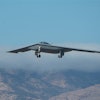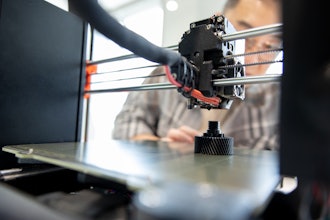TOKYO (AP) - Mitsubishi Heavy Industries will exhibit a mock-up of the cabin of Japan's first commercial jet in decades at the Paris air show later this month, company officials said Monday.
The manufacturer wants to gauge interest for the proposed airliner - known as the Mitsubishi Regional Jet - which would come in 70-seat and 90-seat versions, project general manager Masakazu Niwa said.
''This will be a cutting-edge small jet that combines top-class economy with outstanding cabin comfort,'' Niwa said at a news conference. The goal is to bring the airplane into service in 2012, he said.
Demand for smaller jets with 60-to-100 seats is expected to rise over the next 20 years in regional markets, he added. The new jet is aimed at providing carriers with a low-maintenance, fuel-efficient product that can be operated profitably, he said.
The project was initiated by the government's New Energy and Industrial Development Organization. It would be the first nationally funded project for domestically manufactured passenger aircraft since the YS-11 turboprop airplane - produced by a Japanese consortium, the Nihon Aircraft Manufacturing Corp. - which stopped production in 1973.
Mitsubishi's main target markets are North America, Europe and Japan, and ''around 20 to 30 airlines'' have already expressed some interest in the proposed jet, he added.
If developed, the jet would likely compete against mid-sized jet makers Bombardier Inc. of Canada and Brazil's Embraer SA.
China is also developing a mid-sized jet, the ARJ-21, which has a seating capacity of 78-85 and is due to start flying next year.
Japan currently has no homegrown large-scale aircraft maker, although Japanese manufacturers have been supplying Boeing Co. with parts for decades.
The airliner would aim to be at least 20 percent more fuel efficient than competing aircraft due to the extensive use of light composite materials in the airframe and a new engine design, according to project manager Junichi Miyakawa.
Engine design proposals have been solicited from aerospace manufacturer General Electric Aviation and aircraft engine makers Pratt and Whitney of the U.S. and Britain's Rolls-Royce PLC, he said.
Mitsubishi plans to decide on the project's viability by the end of March next year, Niwa said. In addition to market interest, the company needs to assess the sales network that would be required and evaluate the technologies to be used, he said.
The company also has to secure funding, he added. Japan's The Ministry of Economy, Trade and Industry is expected to cover about 30 percent of the project's expected cost of $987 million, according to news reports.
Mitsubishi is currently reviewing the project's status with government officials, Niwa said, but he declined to offer details. Despite the figures that have appeared in news reports, he added, the projected cost is still under review.


















